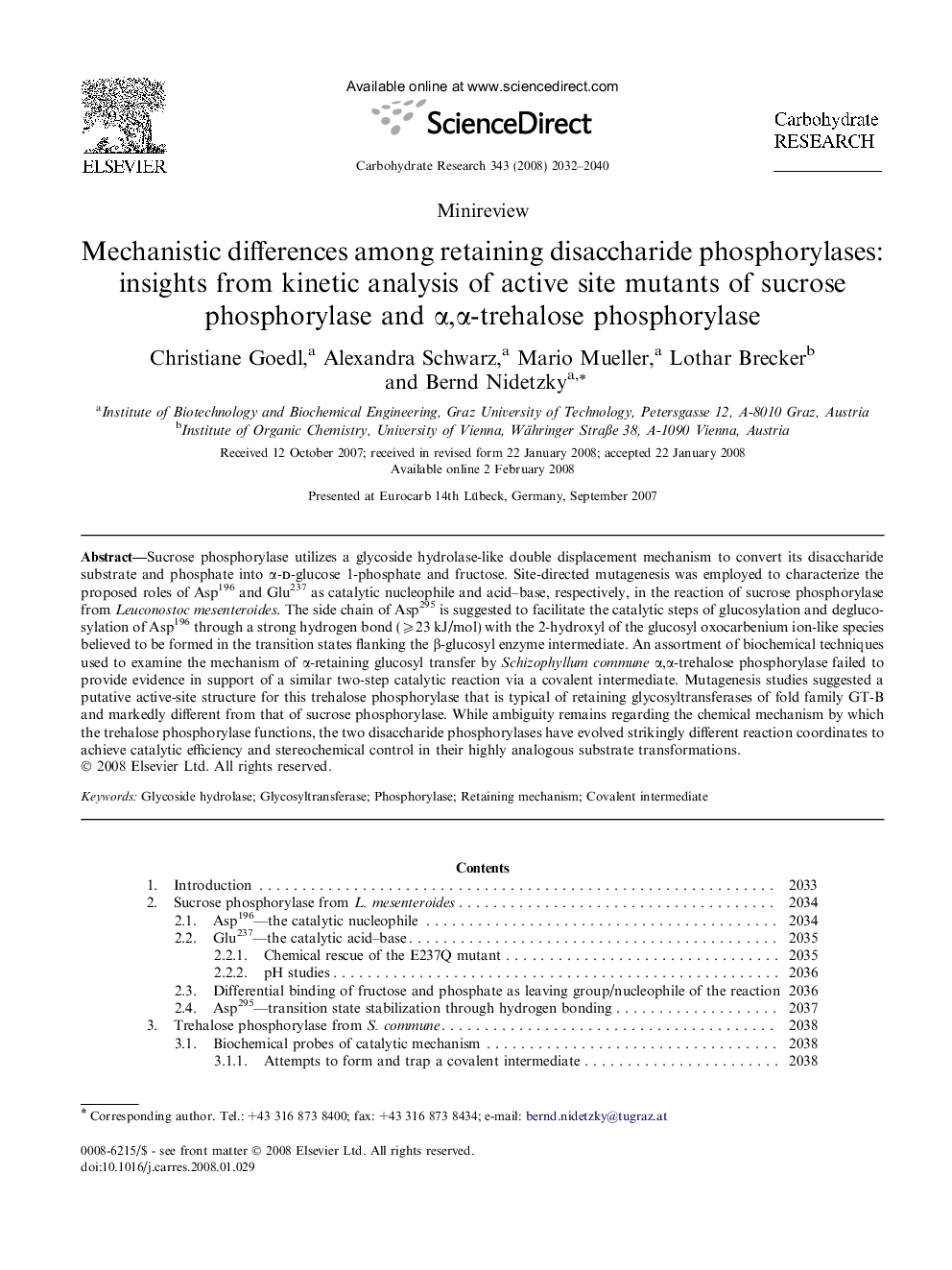| Article ID | Journal | Published Year | Pages | File Type |
|---|---|---|---|---|
| 1388507 | Carbohydrate Research | 2008 | 9 Pages |
Sucrose phosphorylase utilizes a glycoside hydrolase-like double displacement mechanism to convert its disaccharide substrate and phosphate into α-d-glucose 1-phosphate and fructose. Site-directed mutagenesis was employed to characterize the proposed roles of Asp196 and Glu237 as catalytic nucleophile and acid–base, respectively, in the reaction of sucrose phosphorylase from Leuconostoc mesenteroides. The side chain of Asp295 is suggested to facilitate the catalytic steps of glucosylation and deglucosylation of Asp196 through a strong hydrogen bond (⩾23 kJ/mol) with the 2-hydroxyl of the glucosyl oxocarbenium ion-like species believed to be formed in the transition states flanking the β-glucosyl enzyme intermediate. An assortment of biochemical techniques used to examine the mechanism of α-retaining glucosyl transfer by Schizophyllum commune α,α-trehalose phosphorylase failed to provide evidence in support of a similar two-step catalytic reaction via a covalent intermediate. Mutagenesis studies suggested a putative active-site structure for this trehalose phosphorylase that is typical of retaining glycosyltransferases of fold family GT-B and markedly different from that of sucrose phosphorylase. While ambiguity remains regarding the chemical mechanism by which the trehalose phosphorylase functions, the two disaccharide phosphorylases have evolved strikingly different reaction coordinates to achieve catalytic efficiency and stereochemical control in their highly analogous substrate transformations.
Graphical abstractFigure optionsDownload full-size imageDownload as PowerPoint slide
